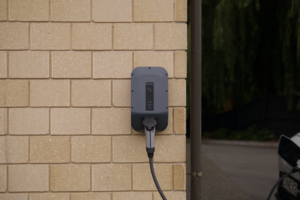As the demand for electric vehicles continues to grow, so does the need for efficient and reliable battery management systems. Battery management systems make it possible to extend the life of battery packs, maximize their performance, and reduce lifecycle costs. In fact, each kind of system plays a huge role in the successful operation of electric vehicles, and it can be difficult to get right. Unfortunately, there are numerous design issues that must be taken into account when designing these systems. This post will run down the design challenges facing battery management systems of EVs.
Cell Balancing Issues
Though many portable electronics have battery packs, the cells in an EV, HEV, or PHEV battery pack are much larger and must work together as one unit. To ensure that every cell is operating at its peak performance, they must be balanced in terms of charge. This can be tricky since none of the cells are identical or manufactured perfectly. Cell balancing technology helps keep things in check by actively monitoring each cell’s state of charge and ensuring that they are operating at their peak performance.
Cell Voltage Variations
 Another common design issue when creating a battery management system is voltage variations. Voltage can vary greatly between cells within a single battery pack, leading to poor performance or even damaging the cells if left unchecked. To ensure that all cells operate within their ideal voltage range, battery management systems must be able to monitor and adjust for variations. On top of these, the system should also be able to detect over-voltage and under-voltage conditions and shut down the battery pack or issue warnings as appropriate.
Another common design issue when creating a battery management system is voltage variations. Voltage can vary greatly between cells within a single battery pack, leading to poor performance or even damaging the cells if left unchecked. To ensure that all cells operate within their ideal voltage range, battery management systems must be able to monitor and adjust for variations. On top of these, the system should also be able to detect over-voltage and under-voltage conditions and shut down the battery pack or issue warnings as appropriate.
Thermal Management
Batteries can be very sensitive to temperature changes, especially for EV batteries. To ensure the battery pack is operating at its peak performance and longevity, the cells must be kept within a certain temperature range. Battery management systems must have sophisticated thermal management capabilities to regulate the temperature of the cells and protect them from damage. In any case, battery management systems must have the ability to detect when the temperature of a cell is too high and take corrective action.
Failure Modes

Finally, battery management systems must be designed to respond gracefully in the event of a failure. Battery packs are complex systems that can fail for many reasons, and it’s important that they have the ability to detect these failures and provide enough information for engineers to diagnose them quickly. Designers must also consider safety when it comes to failure modes. The battery management system must be able to safely shut down the battery pack in the event of a failure or provide warning messages if corrective action needs to be taken.
Whether it’s EV, HEV, or even PHEV, battery management systems have their fair share of design challenges to overcome. To ensure the safety and performance of their batteries, designers must carefully consider each of these issues and create a system that has the capability to handle them. With careful design, battery management systems can be created that are reliable and efficient enough to help extend the life of an EV battery pack while maximizing its performance.…

